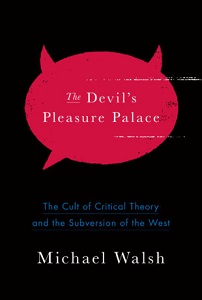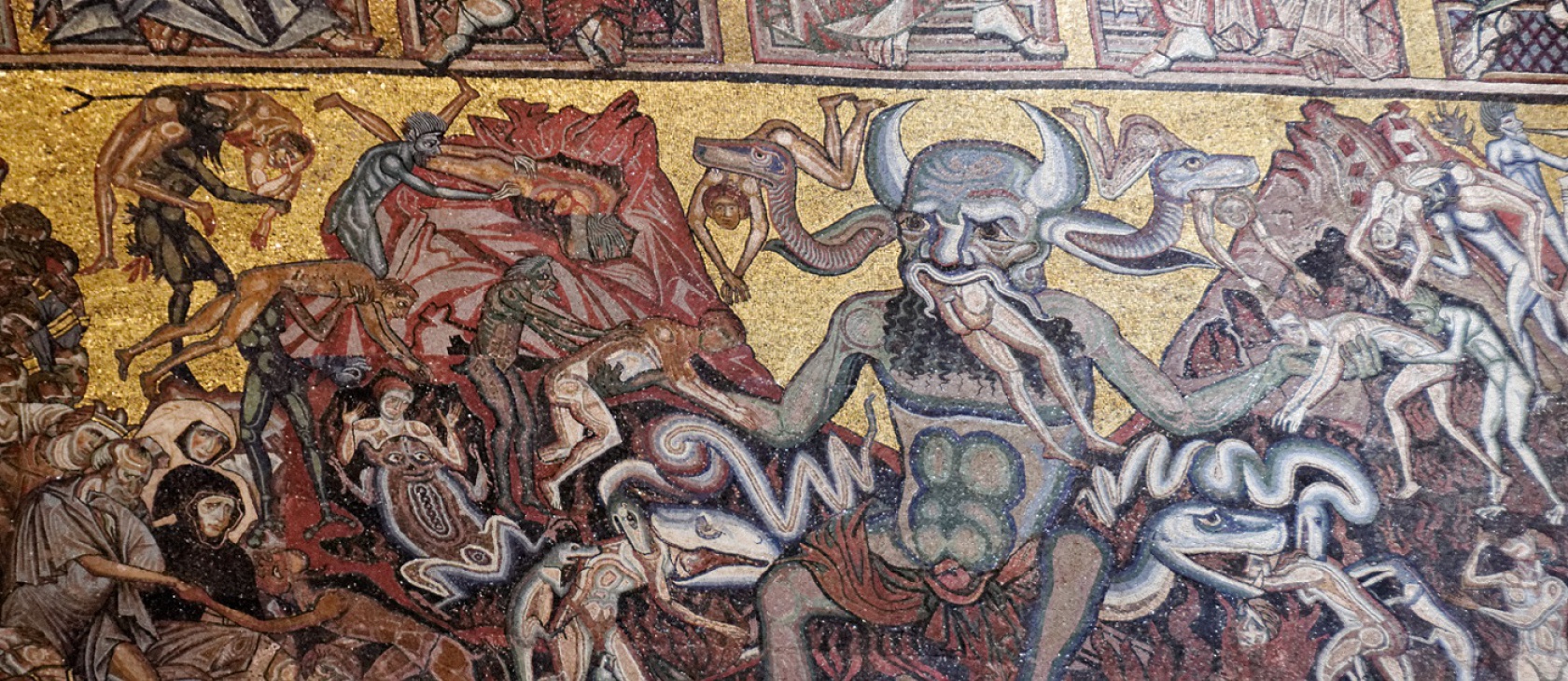The Devil’s Pleasure Palace: The Cult of Critical Theory and the Subversion of the West. Michael Walsh.
Encounter Books. (2017 paperback edition.) 232 pages.
Our civilization seems to be in the grip of a trance begging to be broken. Many in Europe and North America have asked how such a prosperous and free culture could become so radically transformed. How could a civilization once so rich in faith, innovation, goodwill, and appreciation for truth and beauty come to celebrate secularist compulsion, collectivism, identity politics, and vulgarity?
 This theme of false illusion is central to Michael Walsh’s extraordinary book The Devil’s Pleasure Palace: The Cult of Critical Theory and the Subversion of the West, first published in 2015 and just released in a new paperback edition. It is a powerful story of how harmful ideas cross the transatlantic sphere.
This theme of false illusion is central to Michael Walsh’s extraordinary book The Devil’s Pleasure Palace: The Cult of Critical Theory and the Subversion of the West, first published in 2015 and just released in a new paperback edition. It is a powerful story of how harmful ideas cross the transatlantic sphere.
The neo-Marxist thinkers who invented critical theory coalesced at the Institute for Social Research in Frankfurt after World War I. The core idea was to foment radical social change and undermine “repressive” Western culture by advancing roughly the premise that all ideas – except theirs, of course – should be criticized and challenged. The attacks on the institutions that make freedom possible – family, religion, classical education, the arts, free markets, free speech – can be traced to critical theory. Critical theory operates under the guise of “equality” and “social justice,” but suppresses all competing influences.
The long march through the institutions
Having pondered the failure of Marxism to take root in Europe, the Frankfurt School took cues from Italian communist Antonio Gramsci. The focus could no longer be economics, because a growing middle class had no interest in communism. Thus, advocates of critical theory committed to a “long march through the institutions” in order to destroy them from within. The new, multi-disciplinary approach drew from every field of the humanities and social sciences, including Freudian psychology.
The cast of characters included people like Theodor Adorno, who deserves credit for the vulgarization of so much modern music and art; sex addict Wilhelm Reich, who coined the term “sexual revolution” in 1936; and Herbert Marcuse, who developed the notion of “repressive tolerance,” a vehicle to project hypocrisy onto one’s opponents.
As Walsh documents with painful clarity, the Frankfurt School essentially invented multiculturalism to divide people against one another, and invented political correctness to invoke self-censorship. Both advance collectivism.
Walsh – an award-winning screenwriter, novelist, former music critic for Time Magazine, and multilingual scholar of humanities – is uniquely suited to connect the dots in the war on reality enveloping the Western world. “When you can manipulate the language and convince an otherwise sane world that your mad version of events is the truth,” he writes, “you have a formidable, satanic weapon.”
The book weaves together a virtual tapestry of stories that emerge from humanity’s Ur-narrative – from John Milton’s Paradise Lost to the Meditations of Marcus Aurelius; from Richard Wagner’s epic Ring opera to an obscure opera by Franz Schubert called The Devil’s Pleasure Palace.
The sane among us
The tale of The Devil’s Pleasure Palace is a fitting metaphor for the nihilism built into critical theory. The setting is a magical, captivating castle deep in Germany’s Black Forest where a knight is tested by temptations and threats until he succumbs. At that point, his bride vanquishes the final temptation as the entire palace crumbles into nothing. It was merely an hypnotic illusion.
Critical theory discarded the truth for a mirage, as well:
The goal of the Frankfurt School was, at root, to turn Americans into Central Europeans, to undermine the core self-perception of America – free individuals before God – and replace it with a Central European dependence on and worship of the God-State as an embodiment of the General Will, History, Social Justice.
But how to build the illusion when most will reject it outright? Answer: Conjure up a mass delusion by hijacking the institutions from which people derive strength and discernment. And then accuse anybody who rejects this swindle of insanity.
Faceless bureaucrats in the European Union enforce anti-Western standards of speech and behavior that preclude religious and economic freedom.
After Hitler came to power in the 1930’s, members of the Frankfurt School set up shop at Columbia University in New York. “Hell had come to America, disguised naturally as Heaven and now lying in wait for the unwary,” writes Walsh. “The task was to imprison its citizens with the bands of illusion, to make them think that ‘really’ war was peace, freedom was slavery, and ignorance was strength.”
The tipping point of political correctness
In the United States, critical theory has been pressing in from urban elites to the heartland through college campuses and the media/entertainment industry. We can see its fruits in attempting to prevent people of faith from exercising their vocation due to their stance on social issues (often abortion or homosexual issues), or to punish University of Toronto Professor Jordan Peterson because he refuses to use politically correct gender pronouns. But political correctness has metastasized even more thoroughly in Europe, where faceless bureaucrats in the European Union enforce anti-Western standards of speech and behavior that preclude religious and economic freedom.
Similarly, on the surface, the European Union’s policy of openness to mass immigration of non-assimilating radical Islamists seems incompatible with the designs of atheistic elites, who abhor traditional sexual morality. But this is really just a temporary non-aggression pact. “What the Left and Islam have in common is the only thing that matters to either: a will to power and a desire for submission on the part of their enemies," Walsh points out. "The swiftest path to victory for either lies in our unilateral cultural disarmament.” This might explain why London’s Muslim mayor recently tweeted his flying the rainbow flag over City Hall in solidarity with the LGBT ideology.
The power of the strong individual is key
Black swans can sometimes swoop down, though. The harbinger, of course, was the Brexit vote in Britain, which rattled globalists who drank deeply of critical theory’s illusions. Another case was the Left’s utter shock at the defeat of Hillary Clinton, who was supposed to be President Obama’s third and eternal term, the virtual mop-up operation of critical theory in America. They were deaf to Donald Trump as the rough voice of so many common people harmed by elitists policies that created economic decline and cultural decay.
The problems critical theory produced show how interconnected the transatlantic sphere is. A collectivist idea transplanted from Europe to the United States has progressively come to dominate pillars of both societies. But, in the end, victory depends on the courage of lone, heroic individuals who face down the illusions spawned by critical theory. Walsh cites as one such hero the Hungarian guard who refused to shoot when East Germans were massing on Hungary’s border with Austria in 1989. With this singular act of heroism, the Iron Curtain’s dominoes began to fall, and the Berlin Wall collapsed like the Devil’s illusory pleasure palace.
Yes, there are risks to acting alone. But we must never forget that the only weapon in the arsenal of critical theory is human weakness to the seduction of its illusions. In the war of darkness against light, the darkness must be total. It cannot abide any ray of light – and therefore crumbles before the immense power of even a single candle, a single unsung hero.
(Photo credit: Marie-Lan Nguyen. This photo has been cropped. CC BY 2.5.)




